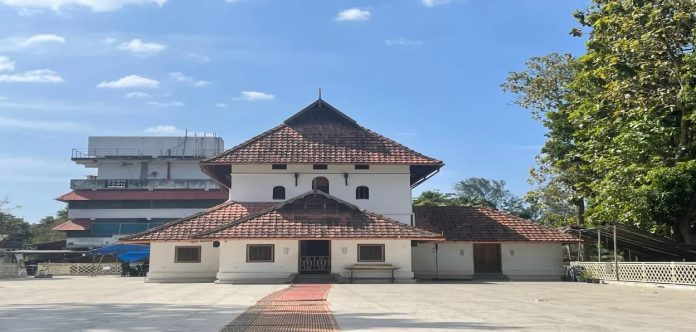The Cheraman Perumal Juma Masjid in Kodungallore, Kerala, holds the distinction of being India’s oldest mosque, dating back to 630 CE. Nestled near the Arabian Sea in the ancient port town of Muziris (now Kodungallore), the mosque is a testament to Kerala’s architectural heritage. Despite its historical and cultural significance, the ongoing renovation of this iconic structure has stalled due to a shortage of funds, reports the ATV.
Legend attributes the mosque’s construction to Cheraman Perumal, one of the last rulers of Kerala’s Chera dynasty. According to folklore, the Hindu king had a vision of the moon splitting and rejoining, a phenomenon later explained by visiting Arab traders as a miracle performed by Prophet Muhammad ﷺ. Very much inspired, the king travelled to Arabia, embraced Islam, and instructed his successors to build a mosque in his kingdom before passing away in Salala.
The mosque, built by the king’s descendants and Arab merchants, stands as a symbol of India’s early connections with Islam. Interestingly, its location is close to the renowned Kodungallore Bhagawati Temple and a church commemorating St. Thomas’s visit to India in 50 CE, emphasising the region’s rich history of interfaith interactions.
The renovation, which began during the COVID-19 pandemic, aims to restore the mosque to its original structure, removing extensions added over the centuries. The recent restoration has already consumed ₹9 crore, funded primarily through donations. Notable contributions came from Yusuff Ali, the billionaire businessman behind the Lulu Mall chain, who provided more than half the funds.
Despite this, the project faces a shortfall of ₹1.5 crore. The former secretary of the mosque committee, C.Y. Salim, explained that while the mosque can currently accommodate 1,500 worshippers, plans to build a canopy to house an additional 2,000 devotees remain incomplete.
The Cheraman Mosque is not just a religious monument but also a symbol of secular unity. It has hosted dignitaries like former President A.P.J. Abdul Kalam, who visited it in 2007. Salim highlights the harmonious coexistence reflected in the mosque’s history.




